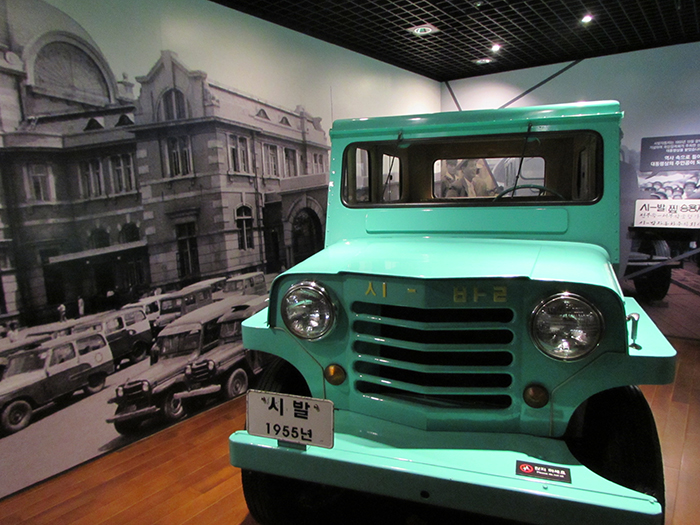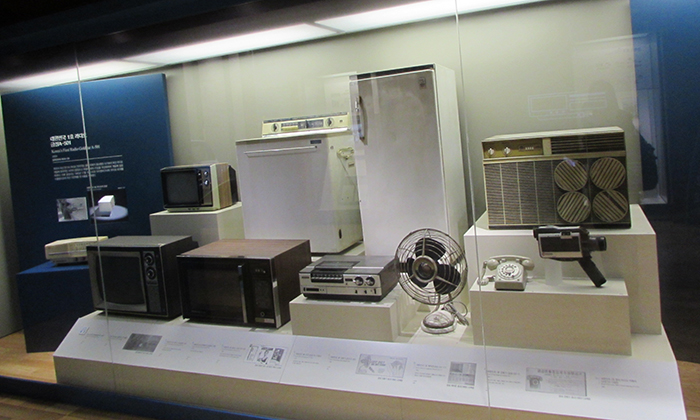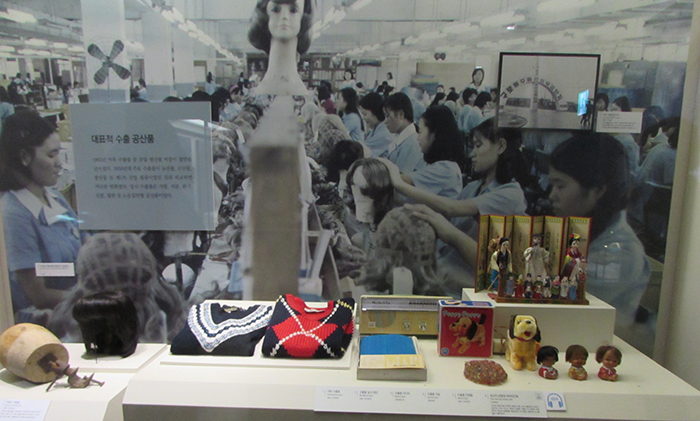View this article in another language
- 한국어
- English
- 日本語
- 中文
- العربية
- Español
- Français
- Deutsch
- Pусский
- Tiếng Việt
- Indonesian

The Sibal is one of the first Korea-made cars.
By Korea.net Honorary Reporter Esraa Elzeny from Egypt
Photos = Esraa Elzeny
When Korea is mentioned, Samsung, LG, Kia and Hyundai come to mind, the Korean conglomerates that no market in the world is without. They make products that have proved efficient across all international forums, that have a long and honorable history and that have become the first choice in many markets in the world. Who among us have not used a Samsung or LG smartphone?
The Korean economy is now the fourth largest economy in Asia and the 11th largest in the world. Economic experts have called it the "Korean Miracle" or the "Miracle on the Hangang River" because of the rapid development that took place over 70 or so years. After the division of the Korean Peninsula in 1945 and the end of the Korean War in 1953, South Korea was one of the poorest countries in the world. It became a rich country in just one generation, one of the fastest growing developing countries in the world.
The journey started with education, which is really the basis of the development of all fields: industry, agriculture, health or business. After the end of the Korean War (1950-1953), there was only rice. Young men went to work in the mines, and young women went to be nurses in Germany. Some soldiers were sent to the Vietnam War. A highway was built using the soldiers' salaries.
The beginning of development was through agricultural projects in small villages, to improve conditions in the villages and spur the beginning of economic independence. This, in addition to light industries, such as textiles, food and wigs, all helped to make Korea a big competitor. Blood began to flow through the economic arteries of the Korean Peninsula. Until it reached heavy industries, such as container or LNG ships, Korea was the first to reach such manufacturing stages, and also cars, electronics, petrochemicals, from nothing to everything.

Economic growth begins modestly in Korea.

The beginning of textile and wig production in Korea are the most famous beginner industries in Korea, and are now internationally known.
Today when I walk through the streets of Seoul, the sellers are proud to say, "Made in Korea," to raise the desire of customers to buy because they know the fame of Korean industry among Korean and non-Korean buyers.
People in Korea tend to buy local products, despite the high price of some of them, because they feel they're made using some of the best raw materials and production techniques, such as clothes or cosmetics. As for non-Koreans, and I'm one of them, I find Korean products very distinctive and I strongly want to find these products and brands in my country, such as the Korean cosmetics that I prefer. They're made of natural materials, but unfortunately the Egyptian economy only knows about Korean heavy industries, such as cars, smartphones and TVs.
I hope that cooperation between Korea and Egypt will increase in the coming years and increase the diversity of Korean products available in the Egyptian and Middle Eastern markets. I know that these products will impress Egyptian buyers just as well as the heavy industry products do.
wisdom117@korea.kr
* This article is written by a Korea.net Honorary Reporter. Our group of Honorary Reporters are from all around the world, and they share with Korea.net their love and passion for all things Korean.